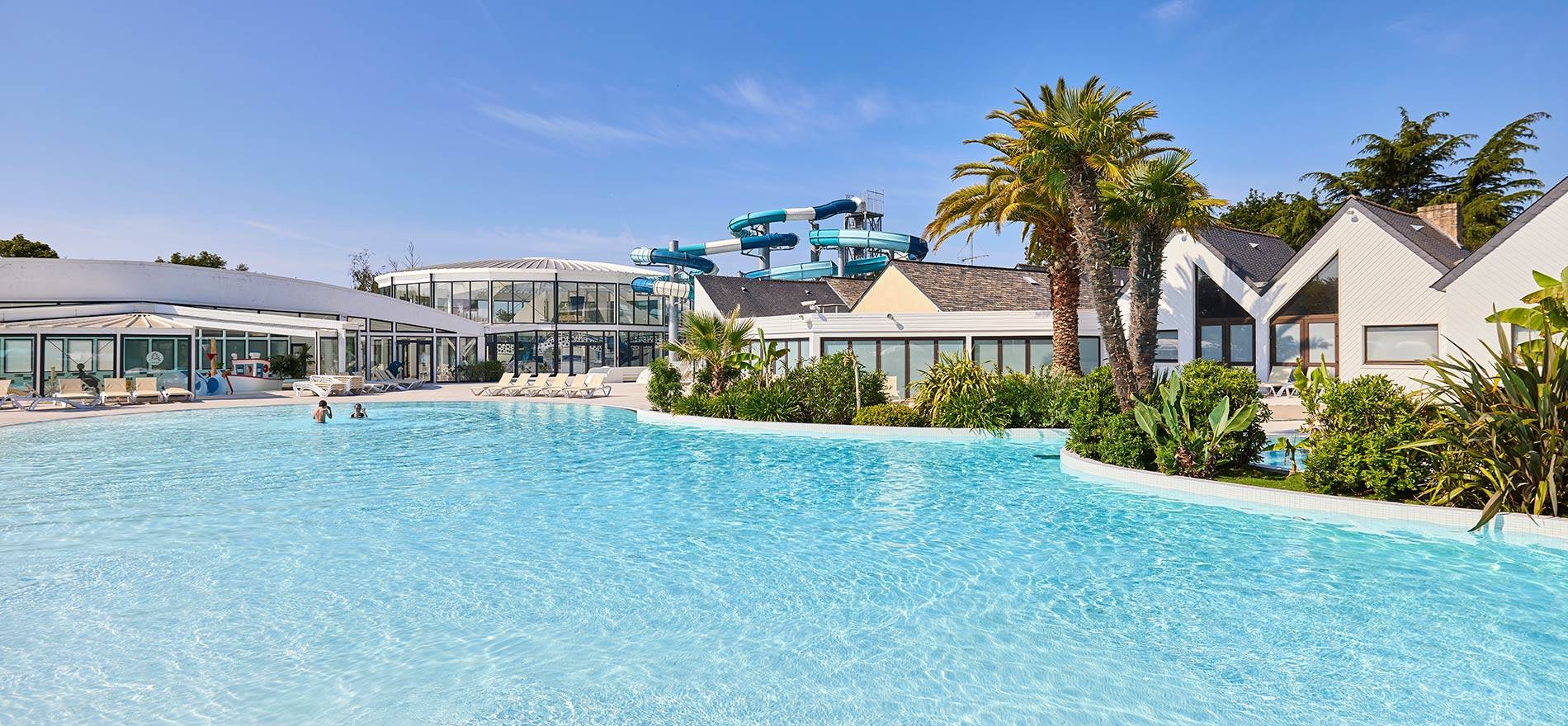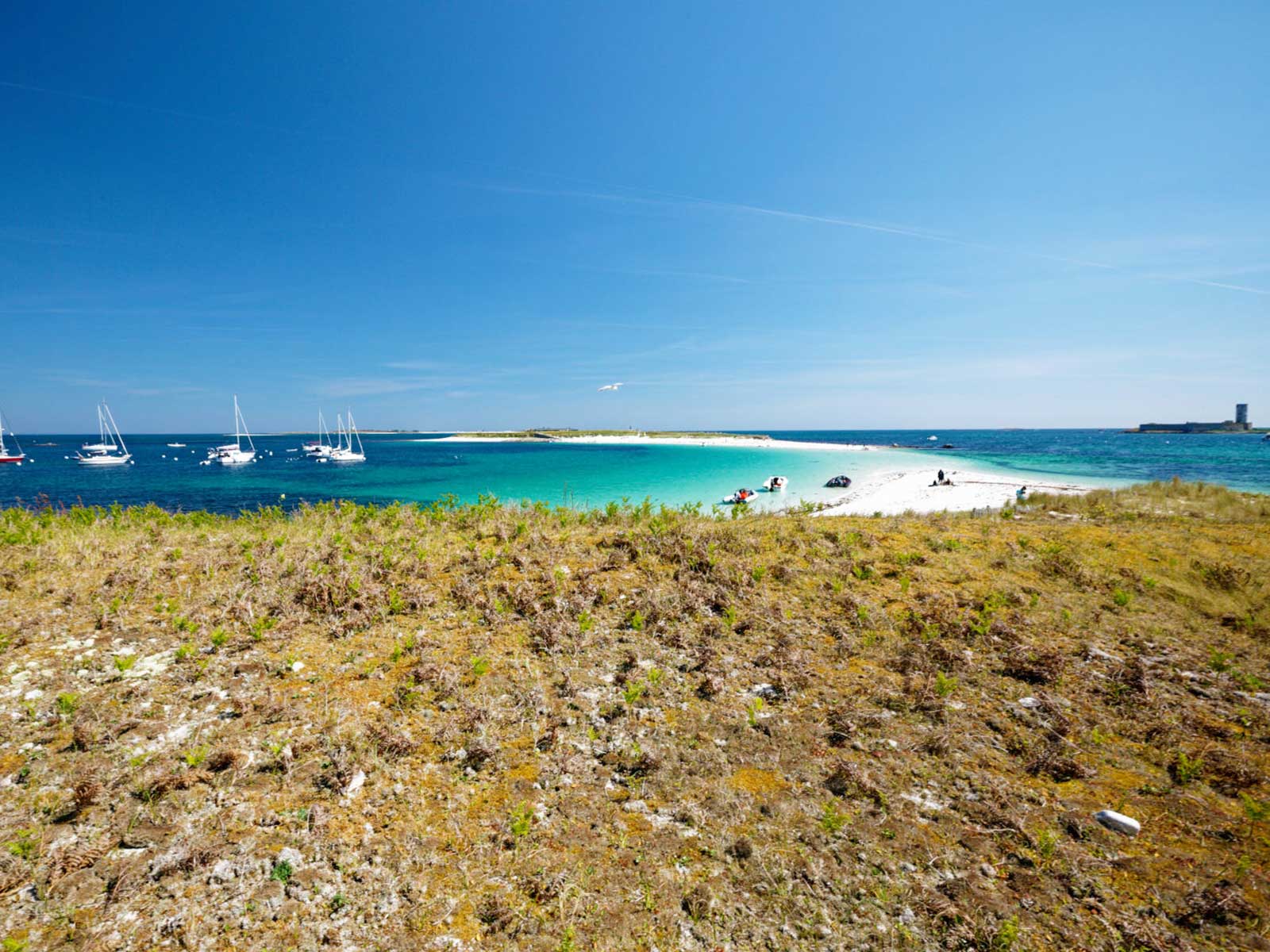
Camping the Glénan islands: a small corner of paradise in southern Brittany
View itineraryThe archipelago is located about 10 nautical miles south of Fouesnant. It consists of nine main islands and many islets. Once attached to the mainland, the archipelago is now divided into many islets, so much so that its difficult to calculate its total surface.
Glénan Archipelago
Sometimes described as "a glimpse of Tahiti in Brittany", it is famous for the clarity of its waters, often compared to a lagoon. This area lies between the islands of St Nicolas, Drénec, Bananec and Cigogne, and serves as a mooring area for boaters. During high tides, the "Chamber" can be crossed on foot and becomes a mecca for shellfish gatherers for abalone and clams.
Only six islands are inhabited: St Nicolas has a few holiday homes (recent), 2 restaurants and a farmhouse occupied by a diving centre. The archipelago was a shelter for fishermen for a long time. In the 19th century, Saint Nicolas boasted the largest breeding ground for lobsters in France.
Ile de Penfret
Located to the east of the archipelago, Ile de Penfret is home to a lighthouse and a semaphore. The Glénans sailing school has owned almost all of the island since 1952.
Ile de Bananec
Ile de Bananec is linked to Saint Nicolas by a sand bar, a "tombolo", which is revealed at low tide. The “Glénans” sailing school, owner of the island, built the school in the 1960s.
Ile Cigogne
Ile Cigogne owes it name not to the bird (stork) but to the shape of the island, Seiz Kogn which means "seven corners" in Breton. It boasts a distinctive fort, built in 1756 to stop English pirates anchoring in the "chamber". It housed 80 soldiers.
Ile Saint Nicolas
Saint Nicolas is the main island in the archipelago. It is accessible by boat during the summer, from Concarneau, Fouesnant and Benodet and is the hub of tourist activity. Part of the island is a listed nature reserve (since 1974), the smallest in France (1.5ha), to protect the “Glénan” narcissus, emblematic plant of the archipelago.
Ile du Loch
The island of Loch with an old farmhouse and a pond of brackish water is owned by the Bolloré family. It is the largest in area.
A baron tried to breed fish in this pond. He also modernized seaweed burning techniques by building a real oven factory in 1874.
The chimney of the former manufacturing facility now serves as a landmark.
Ile aux Moutons
Ile aux Moutons (sheep island) is also part of the Glénan archipelago. It lies halfway between the mainland and the islands. This island is in fact a little archipelago itself with the “Trévarec” rock. In the late 1940s, Quimper traders and pilots demanded the installation of a lighthouse on the island. The work began in 1877 and it was first lit on 1st January 1879. The « Quéméré » couple lived there for almost 30 years: they gave birth to and raised 11 children without interrupting their service. A cow and a kitchen garden helped them when the delivery of supplies was delayed.
The island is now a bird sanctuary where two species of terns nest. A large nesting area is closed to the public. Archaeological excavations have been carried out, showing human presence in the Neolithic and the Gallic period.


